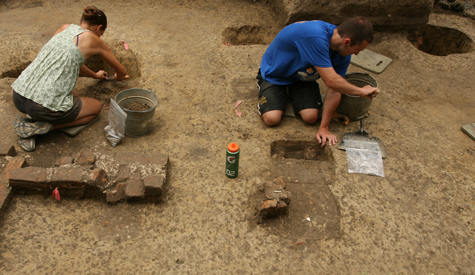W&M to mark site of 18th century school for black children
William & Mary will erect a highway marker commemorating the spot where evidence indicates the Bray School for enslaved and free African-American children was located, according to a press release issued today by the Virginia Department of Historic Resources. The marker will be placed as soon as early fall on Prince George Street near the Brown Hall archaeological site, a dormitory that is located just off the edge of the main campus.
The university’s request for the marker was approved by the Virginia Board of Historic Resources on June 21. The marker is expected to take two months for the foundry, Sewah Studios, to manufacture.
The Associates of Dr. Bray, a London-based charity, founded a school in 1760. A Williamsburg location was agreed upon at the suggestion of Benjamin Franklin, who was a member of the association.
The school was open for 14 years, closing in 1774. During that time as many as 400 boys and girls received instruction from a teacher named Anne Wager. She taught the principles of Christianity, deportment, reading and, possibly, writing, although that is open for debate.
During excavation of the Brown Hall site several years ago, bits of approximately 40 slate pencils were discovered, leading investigators to conclude that writing was among the subjects taught. However, further analysis of the curriculum showed that the teaching of writing was never mentioned by the Associates or their correspondents as a component of the skills anticipated to be taught in the Bray Schools.
 Skip to main content
Skip to main content

